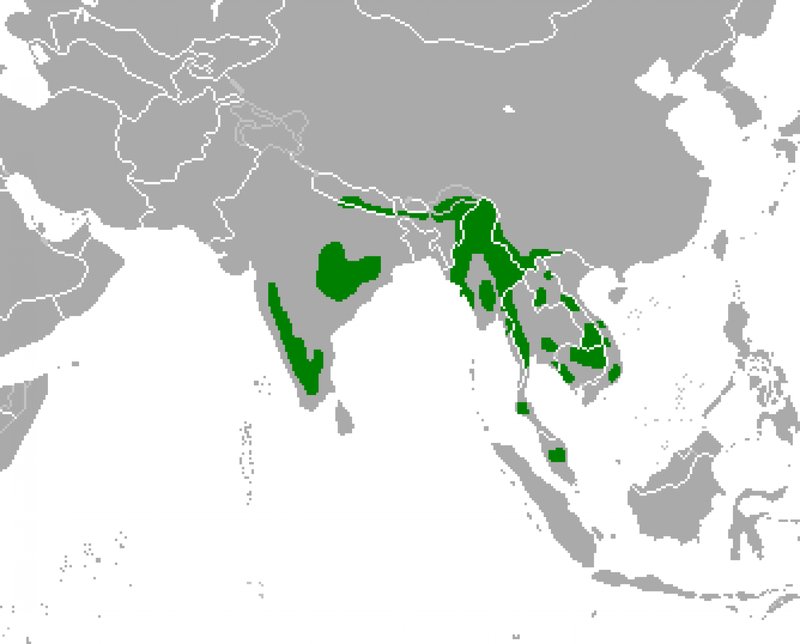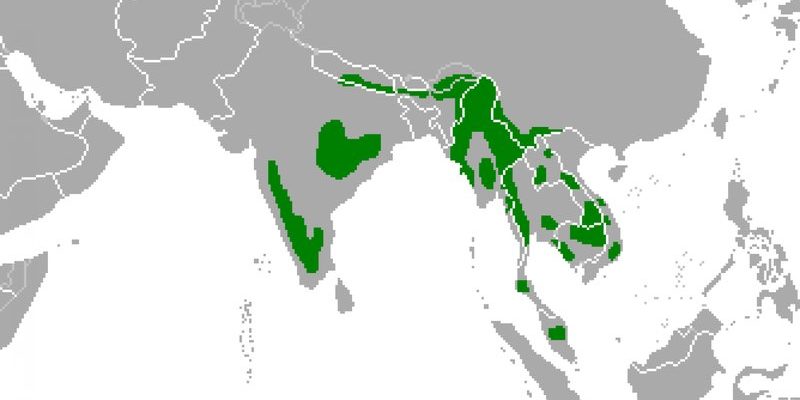
Imagine you’re exploring the thick jungles of South Asia, surrounded by towering trees and the sounds of chirping birds. Suddenly, you spot a herd of gaurs standing majestically among the foliage. Their impressive stature and muscular build are striking. But where exactly do these incredible animals call home? In this article, we’ll take a deep dive into the habitat and distribution of gaurs, unraveling their world step by step.
The Natural Habitat of Gaurs
Gaurs love thick forests, especially tropical and subtropical regions. They thrive in areas with dense vegetation, such as deciduous forests and mixed forests. Picture a lush green landscape where sunlight filters through the leaves, creating a patchwork of light and shadow. This environment offers gaurs not just shelter but also a buffet of food options, including grasses, leaves, and fruits.
These animals are quite adaptable, which is part of what makes them so fascinating. They can navigate through hilly terrains and flat valleys alike. However, one thing is clear: gaurs prefer habitats where they can find plenty of food and water sources. That’s why you’ll often find them near rivers or streams, where they can drink and cool off.
Common Forests and Regions
Gaurs primarily inhabit regions across South and Southeast Asia. You might find them in places like:
- The forests of India, especially in states like Madhya Pradesh, Maharashtra, and Assam.
- The hilly regions of Nepal and Bhutan.
- Parts of Myanmar, Thailand, and Malaysia, where dense jungles provide the perfect cover.
Within these areas, gaurs often move in herds, which helps them feel secure. This social behavior plays a crucial role in their survival, as they protect each other from potential threats.
Distribution of Gaurs
When it comes to distribution, gaurs have a pretty wide range, but they’re not as common as you might think. Their numbers are dwindling due to habitat loss and hunting. These gentle giants are typically found in specific regions, meaning you’ll need a bit of luck to spot one in the wild.
Historically, their range extended throughout the Indian subcontinent and parts of Southeast Asia. Today, their distribution is more fragmented. You might be wondering: why is this important? Well, knowing where gaurs live can help conservationists target their efforts to protect these animals and their habitats.
Current Range and Population Trends
The current range of gaurs includes:
- Central and southern India
- Parts of northeastern India (like Assam)
- Thailand, Vietnam, and Malaysia
Sadly, populations have been declining due to habitat destruction from agriculture and urbanization. Conservation efforts are crucial to ensure these beautiful creatures don’t vanish from their natural homes.
Environmental Factors Affecting Gaurs
Just like any other species, gaurs are influenced by their environment. Climate change, deforestation, and human activity are significant factors that affect where gaurs can thrive.
You might be curious about how these factors play out in real life. For instance, as forests are cleared for agriculture or logging, gaurs lose their natural habitat. This leads to less food and fewer places to hide from predators. Moreover, climate change can shift their living conditions. Warmer temperatures and changing rainfall patterns can directly impact the types of vegetation available for them to eat.
Human Interaction and Its Impact
Human interaction has both positive and negative effects on gaurs. On one hand, conservation areas and national parks help protect their habitats. On the other hand, increasing human populations lead to more land being converted for crops and settlements.
This means that while some gaurs may find safety in protected areas, others may wander outside in search of food, putting them at risk of poaching or vehicle collisions. It’s a tough balance—how can we protect these magnificent beasts while also meeting human needs?
Conservation Efforts for Gaurs
Understanding where gaurs live leads to recognizing the importance of conserving their habitats. Various organizations are working hard to safeguard these animals through habitat preservation and anti-poaching measures.
For example, wildlife sanctuaries in India like Kanha and Anamalai are crucial for protecting gaurs. These areas allow them to roam freely while providing the necessary environment for their survival. Here’s the thing: by protecting gaurs, we help maintain the entire ecosystem they’re part of. Gaurs contribute to plant growth by grazing, which can help propagate various plant species.
Future of Gaurs
The future of gaurs hinges on continued conservation efforts. It requires collaboration between local communities, governments, and wildlife organizations. Creating awareness about the importance of these animals and their habitats is a significant step. When people understand the value of gaurs, they’re more likely to support conservation initiatives.
By fostering a sense of appreciation for gaurs, we can build a future where these incredible creatures continue to roam the forests of South Asia.
In summary, gaurs live in lush forests across South and Southeast Asia, thriving in areas that offer both food and safety. While their majestic presence is a sight to behold, their numbers are dwindling due to human activity and environmental changes. Through conservation efforts and community involvement, we can work together to protect their habitats and ensure these gentle giants are not lost to future generations. Understanding where gaurs live is just the beginning—now it’s up to all of us to make sure they have a safe place to call home.

